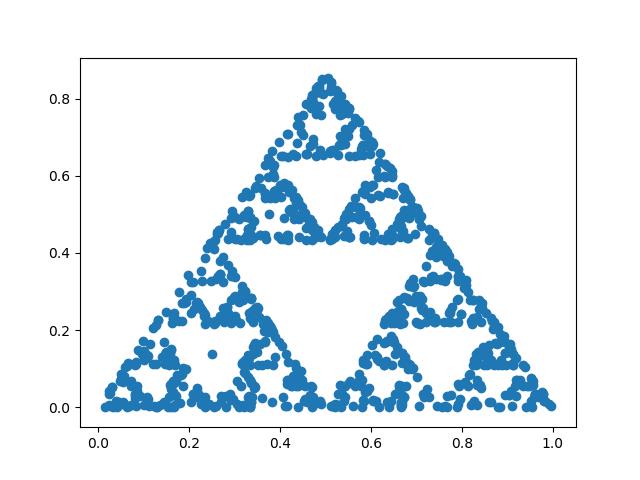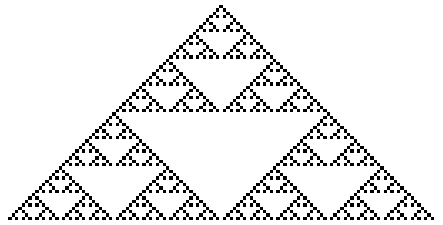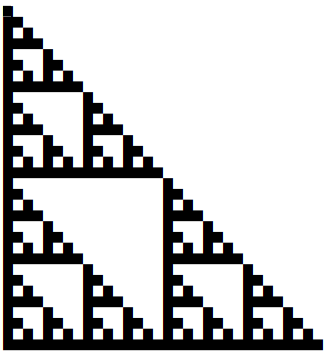The Sierpiński triangle is a fractal that comes up in unexpected places. I’m not that interested in fractals, and yet I’ve mentioned the Sierpiński triangle many times on this blog just because I run into it while looking at something else.
The first time I wrote about the Sierpiński triangle was when it came up in the context of a simple random process called the chaos game.

Next I ran into Sierpiński in the context of cellular automata, specifically Rule 90. A particular initial condition for this rule leads to the image below. With other initial conditions you don’t get such a clean Sierpiński triangle, but you do get similar variations on the theme.

Next I ran into Sierpiński in the context of low-level programming. The following lines of C code prints an asterisk when the bit-wise and of two numbers is non-zero.
for (int i = 0; i < N; i++) {
for (int j = 0; j < N; j++)
printf("%c", (i&j) ? ' ' : '*');
printf("\n");
}
A screenshot of the output shows our familiar triangle.

Then later I wrote a post looking at constructible n-gons, n-sided figures that can be constructed using only a straight edge and a compass. These only exist for special values of n. If you write these special values in binary, and replace the 1’s with a black square and the 0’s with a blank, you get yet another Sierpiński triangle.

Finally, if you look at the odd numbers in Pascal’s triangle, they also form a Sierpiński triangle.

OK, that’s spooky cool. And we ridicule people who see a portrait of Jesus in a freshly grilled tortilla. Hmm.
Check out the ternary statement in the C code. I rewrote it in Python and confirmed my suspicion that the if and else statements should be reversed.
I would argue that Rule 90 and Pascal’s triangle mod 2 should count as the same method, as Rule 90 is just addition modulo 2.
And they can be constructed from electrons on a lattice: https://www.nature.com/articles/s41567-018-0328-0